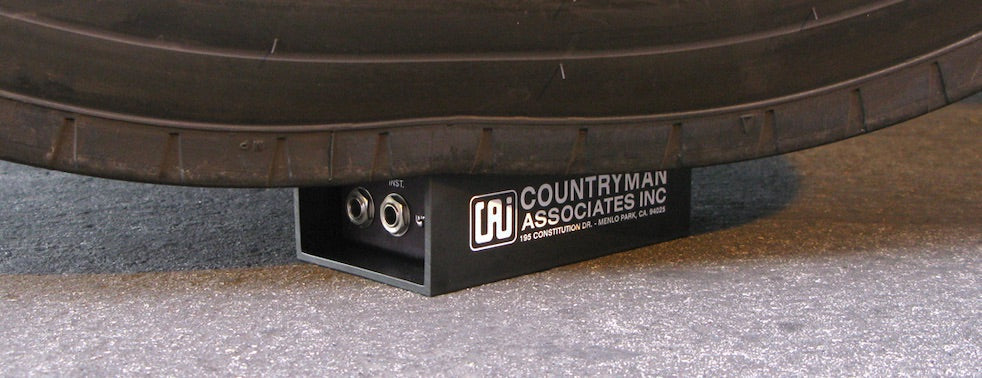Okay, we're a little obsessed with direct boxes. We enjoy inspecting aluminum extrusions for nicks, browsing switch datasheets during lunch, and devising new ruggedness tests for the legendary Type 85, and new Type 10, Type 10S Stereo, and Type 85S Stereo boxes. In our defense, the DI is one of the first elements in your system, and the way it performs can make or break your sound. A lot goes in to a great DI. Find out why Countryman DIs are an essential part of road kits worldwide:
1. Tough
Every Countryman Direct Box is built unreasonably tough, because we know life on the road and in the studio is rarely reasonable. When it comes to outrageous ruggedness, Countryman DIs crush the competition:
2. Accurate
Nothing will sound muddy or blurred when passed through the Type 10. Instead, your sound will be accurate, clean, and completely faithful to the source. The Type 10, and the Type 10S, deliver outstanding transient response as a result of their flat and wide bandwidth (+/- 1dB, 10Hz–50kHz) and ultra-low deviation from linear phase (<2°, 30Hz–20kHz).
We measured the step response for three top-selling competitor DIs and plotted them above. Only the Type 10 (in black) is free of large overshoot, underdamped ringing, and overdamped (lazy) response. That’s why only the Type 10 can faithfully preserve the clarity of your instruments.
3. High Overload
Most DIs do not handle high signal levels with grace. Many use old and cheap op amps plagued by poor overload characteristics; most notably, phase inversion.
Phase inversion is where the op amp output abruptly transitions from one supply to the other on overload. This leads to countless non-linear artifacts, to put it mildly. In fact, phase inversion will even mask the original fundamental frequency of the source.
4. Low Noise and Distortion
Some boxes achieve low distortion over a narrow range of frequencies and levels, but end up coloring the low frequencies and distorting loud signals. We believe that a great DI should pass all relevant amplitudes and frequencies of inputs with virtually immeasurable total harmonic distortion and noise (THD+N).
When it comes to THD+N, the Type 10 and Type 10S significantly outperform the competition. These plots show the percentage of distortion and noise a DI box adds to your sound as you increase the level, for both 40 Hz and 1 kHz inputs.

Competitive active (shown in blue) and passive DIs (shown in green) introduce nearly 10 times more THD+N than the Type 10 (shown in grey)—the popular active DI shown here actually clips and distorts badly at even moderately high levels. For most instruments, the critical region of this curve is from -20 dBVrms to 3 dBVrms, where the THD+N for the Type 10 is less than 0.005% for the entire audio band.
5. Crosstalk Rejection
Both of the Countryman stereo DIs excel at rejecting interchannel crosstalk—the unintended mixing of signals from one channel to the other. For most competitor stereo DIs, crosstalk is a major limiter of performance, particularly of usable dynamic range. For example, crosstalk rejection of 60 dB means whatever you plug into channel one will also feed into channel two—padded by 60 dB. This would decrease your dynamic range for most pro DI boxes by 40 to 60 dB (100 to 1000 times)!
Since many stereo DI manufacturers omit specifying cross-talk rejection, we decided to take some measurements on three of the most popular active stereo DIs on the market, and plotted the results here with the Type 10S for comparison (the Type 85S curve is identical).
Countryman stereo DIs outperform the competition by 20 to 60 dB, ensuring that they function exactly like two separate one-channel DIs side-by-side.
For more information, please call us, or you can order online here.

